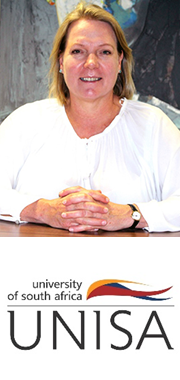Project “Monitoring and removal of antibiotics from wastewater by membrane separation”

The project leader of research group from South Africa – Lueta-Ann de Kock.
Lueta-Ann de Kock work is a Director of the Nanotechnology and Water Sustainability (NanoWS) Research Unit. It`s department of the University of South Africa (UNISA).
The South African team from the Institute for Nanotechnology and Water Sustainability (iNanoWS) in the College of Science, Engineering and Technology (CSET), University of South Africa (UNISA) will focus on the distribution in aquatic environment of pharmaceutical compounds relevant to the treatment of COVID-19 and other prevalent disease burdens relevant to sub-Saharan Africa (HIV and TB). Opportunities abound for the development of geographical pharmaceutical consumption tools (in the form of heat maps) that could be used by municipalities and health authorities to identify hot spots for these pharmaceutical compounds and their related diseases. The main idea here is to expand the traditional wastewater-based epidemiology approach by including wastewaters, sludge samples and drinking water sources. Further, antibiotic resistance microbes will be investigated and a treatment technology based on silver and copper modified membranes.
Project “Development of membrane-based methods to improve the recovery of pure water and valuable products from the waste”

The project leader of research group from South Africa – Lueta-Ann de Kock.
Lueta-Ann de Kock work is a Director of the Nanotechnology and Water Sustainability (NanoWS) Research Unit. It`s department of the University of South Africa (UNISA).
The South African research group will focus on the development of ion-exchange and composite ion exchange membranes for the fractionation and selective recovery of nutrients such as phosphate and nitrate from concentrated brine solutions. Removal of charged pollutants by fixed bed ion-exchange processes have been widely documented. Recent studies on the application of hybrid ion-exchange materials with different types of exchange sites have shown that charged pollutants in the presence of a competing species selectively exchange with one type of site. It is possible to selectively regenerate the different exchange sites, and in this manner fractionating the charged components and enabling the recovery the charged species in a relatively pure form. This work will aim to develop ion-exchange membranes that fractionate phosphate and nitrate form the other components in the contacting brine solution. Subsequent regeneration of the ion-exchange membranes will produce either a phosphate or nitrate-rich brine that can then be combined with other components to form slow release fertilizers.
